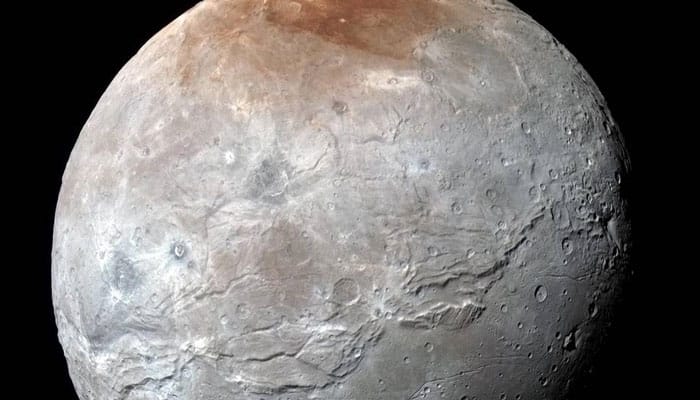Washington: The first published results from the historic flyby of Pluto by NASA's New Horizons spacecraft in July have unveiled the icy-dwarf planet's striking surface variations and unique moon rotations.
The colour images of Pluto obtained with New Horizon's Multi-spectral Visible Imaging Camera (MVIC) show a wide range of colours across Pluto's surface - from dark, red regions at the equator to brighter, bluer regions at higher latitudes.
A heart-shaped region interrupts this pattern by displaying different colours in its western and eastern lobes.
University of Maryland astronomers Silvia Protopapa and Douglas Hamilton are among the authors of the first published paper from the New Horizons flyby, published in the journal Science.
Protopapa helped map the composition of Pluto's surface and locate ices on it. Hamilton helped confirm the shapes, sizes and unique rotations of two of Pluto's moons and the finding that no other moons appear to orbit Pluto.
The findings will help scientists understand the origins and subsequent history of Pluto and its moons.
"We knew Pluto's surface was heterogeneous based on ground-based data. However, I was astonished to see such spectacular surface colour and geological diversity," said Protopapa.
The team reports significant regional differences in volatile ices on Pluto's surface. The western lobe of the heart-shaped region contains methane ice and carbon monoxide ice, while the dark red equatorial regions appear to contain very little volatile ice.
The data from spacecraft's Linear Etalon Imaging Spectral Array (LEISA) released by NASA but not included in the Science paper shows numerous small exposed regions of water ice in the red areas of the colour images taken by the MVIC.
This data offers the first clear evidence of water ice on Pluto, following decades of trying to detect it using Earth-based telescopes, researchers said.
"Water ice is a new element that we must consider as we try to piece together Pluto's complex surface composition," said Protopapa.
The red colour on the surface indicates the presence of organic compounds called tholins, which are the result of energetic irradiation of methane, nitrogen and carbon monoxide mixtures, researchers said.
Data published confirms ground-based measurements detailing the similar sizes and shapes of Nix (30 miles by 20 miles) and Hydra (27 miles by 20 miles).
The surface compositions of the moons also appear similar - Hydra boasts several crater-like features, and Nix sports a large crater that appears to be a different colour than the rest of the moon.
The New Horizons team expects to learn more about the surface composition of the moons when they download additional LEISA data.
















